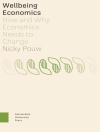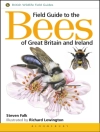This comprehensive, thought-provoking introduction to narrative inquiry in the social and human sciences guides readers through the entire narrative inquiry process—from locating narrative inquiry in the interdisciplinary context, through the philosophical and theoretical underpinnings, to narrative research design, data collection (excavating stories), data analysis and interpretation, and theorizing narrative meaning. Six extracts from exemplary studies, together with questions for discussion, are provided to show how to put theory into practice. Rich in stories from the author′s own research endeavors and incorporating chapter-opening vignettes that illustrate a graduate student′s research dilemma, the book not only accompanies readers through the complex process of narrative inquiry with ample examples, but also helps raise their consciousness about what it means to be a qualitative researcher and a narrative inquirer in particular.
This book has received the 2017 Outstanding Publication Award from the Narrative Research Special Interest Group (SIG) of the American Educational Research Association (AERA). The award honors research-based texts dedicated to advancing the educational process through research or scholarly inquiry.
Cuprins
1. Locating Narrative Inquiry in the Interdisciplinary Context
Scientific Research and Qualitative Research in Tandem
Narrative Inquiry
Narrative Inquiry in Different Disciplines
Some Cautionary Tales About Narrative Inquiry
Narrative Inquiry as the Synergy of Interdisciplinarity
Learning to be a Storyteller in the Interdisciplinary Context
Conclusion: A Falling Apple
2. Philosophical/Theoretical Underpinnings of Narrative Inquiry
The Role of Theory
Philosophical/Theoretical/Interpretive Paradigm
Theory and Narrative Inquiry
Critical Theory
Critical Race Theory
Feminist Theory
Phenomenology
Poststructuralism/Postmodernism/Deconstruction
Dewey′s Theory of Experience
Bakhtin′s Theory of Novelness
Conclusion: No Theory Used as a Procrustean Bed
3. Narrative Research Design: Engaging in Aesthetic Play
Engaging in Aesthetic Play
Standards for Humanities-Oriented Research
Learning to Think Narratively
Plowing Before Sowing: On Reviewing the Literature
Developing ‘Good’ Research Questions
Imagining the Researcher-Participant Relationship: From ‘Spy’ to ‘Friend’
Ethical Issues in Narrative Inquiry
Qualitative Writing vs. Scientific Writing
Imagining Narrative Writing as Aesthetic Play
Conclusion: Where Your Heart Belongs
4. Narrative Research Genres: Meditating Stories Into Being
Narrative Inquirer as a Midwife
Narrative Research Genres
Autobiographical Narrative Inquiry
Biographical Narrative Inquiry
Arts-Based Narrative Inquiry
Literary-Based Narrative Inquiry
Visual-Based Narrative Inquiry
Conclusion: Blurring Genres
5. Narrative Data Collection Methods: Excavating Stories
Narrative Thinking
Interview Logistics
Types of Qualitative Interview
Narrative Interviewing
Fieldwork
Artifacts: Cabinets of Curiosities or Cabinets of Wonder
Visual Data
Digital Archival Data
Conclusion: Excavating Stories as Data
6. Narrative Data Analysis and Interpretation: ‘Flirting’ With Data
On Flirtation
Qualitative Data Analysis
Theorizing Narrative Data Analysis and Interpretation
Methods of Narrative Data Analysis
Narrative Analysis in Narrative Genres
Conclusion: Variegations of Narrative Analysis and Interpretation
7. Narrative Coda: Theorizing Narrative Meaning
On Coda
Researching Signature
Answering the Question ‘So What?’
Desiring and Audience
Avoiding an Epic Closure
Theorizing Findings
Planting the Seed for Social Justice
Becoming a Scheherazade
Conclusion: Ongoing Stories
8. Critical Issues in Narrative Inquiry: Looking Into a Kaleidoscope
Looking into a Kaleidoscope
Contradicting Stories: The Rashomon Effect
Temptation of Backyard Research
On Reflexivity
On Bricolage and Bricoleur
On ‘Small’ Stories
Storytelling as Performance
Conclusion: Pushing the Boundary of Narrative Inquiry
9. Examples of Narrative Inquiry: Theory Into Practice
Narrative Inquiry as Phenomenon and Method
Narrative Inquiry as Oral History
Narrative Inquiry as Life Story
Narrative Inquiry as Autoethnography
Narrative Inquiry as Creative Fiction
Narrative Inquiry as Fiction
Conclusion: Learning to be a Storyteller
10. Epilogue
Despre autor
Jeong-Hee Kim is a Professor of Curriculum Studies in the Department of Curriculum and Instruction at Texas Tech University. Kim is a curriculum theorist, teacher educator, and narrative inquiry methodologist. Her research centers on various epistemological underpinnings of curriculum studies, focusing on phenomenological and hermeneutical ways of understanding the field of curriculum studies and teacher education. She has received two awards—Outstanding Narrative Research Article in 2007 and Outstanding Narrative Theory Article in 2009—from the Narrative Research (Special Interest Group) at the American Educational Research Association (AERA). She has also received the Faculty Excellence in Research/Creative Activities Award from the College of Education at Kansas State University in 2011. Her recent publications can be found in the Journal of Curriculum Studies, International Journal of Qualitative Studies in Education, and Educational Philosophy and Theory. She currently teaches graduate courses on curriculum theory, narrative inquiry, and action research in education.












